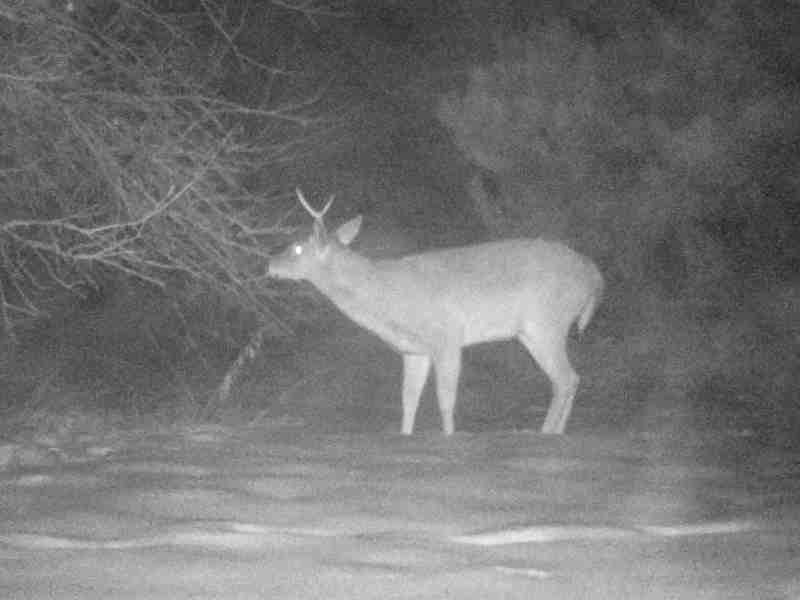The nocturnal behavior of bucks has long posed a challenge for hunters and conservationists. Do they even exist, and how can we effectively hunt and manage these elusive creatures?
Is there such a thing as a 100% nocturnal buck? The answer is no! Some deer are changing activity patterns for several reasons (ex., hunting pressure) to move more after dark.
But that doesn´t make them nocturnal, as in completely inactive during daylight hours. Rather, it underscores the dynamic nature of their behavior in response to various factors.
This article explores the factors influencing their nocturnal tendencies, such as food availability, hunting pressure, weather conditions, predators, and age and experience.
read.. How Fast Can a Stand Recover From Hunting Pressure
It also examines the impact of the rutting season on buck activity and provides strategies for hunting nocturnal bucks, including trail cameras, hunting stands or blinds, calls and scents, and stealthy approaches.
Furthermore, the article discusses conservation approaches to balance hunting opportunities and conservation goals in managing nocturnal bucks.
Key Takeaways
- “Nocturnal” bucks are harder to hunt due to their elusive nature.
- Understanding the factors influencing their nocturnal behavior can help hunters strategize better.
- Some bucks may exhibit increased nocturnal behavior during the rutting season.
- Utilizing trail cameras, hunting stands or blinds, and employing stealth and patience are effective strategies for hunting nocturnal bucks.
Contents (Jump to Topic)
ToggleNocturnal Behavior and Hunting Challenges
The elusive nature of nocturnal bucks poses challenges for hunters due to their increased activity during the night.
Tracking these bucks can be difficult, as they are more active during the twilight hours when visibility is limited.
Additionally, their cautious behavior and ability to blend into their surroundings make them hard to locate and follow.
To overcome these challenges, hunters often rely on night vision equipment, such as scopes or thermal imaging cameras, to enhance their ability to detect and track bucks in low-light conditions.
But it is important to note that such equipment may require additional training and adherence to local hunting regulations.
Factors Influencing Nocturnal Behavior
Food availability and hunting pressure are among the factors that influence the nocturnal behavior of bucks.
In addition to these factors, the impact of light pollution and the influence of human activity can also play a significant role in shaping the nocturnal behavior of bucks.
Light pollution from urban areas can disrupt the natural light-dark cycle, causing bucks to alter their activity patterns.
The increased presence of humans in their habitat can lead to increased disturbance and pressure, pushing bucks to become more nocturnal to avoid human encounters.
Rutting Season and Nocturnal Buck Activity
Rutting season (between the middle of October to early December) triggers an increase in nocturnal activity among male deer.
Bucks compete intensely for mates during this period, leading to heightened nocturnal behavior.
To explore this further, the following table provides an overview of the factors influencing nocturnal buck movement during the rutting season:
| Factors | Description | Impact on Nocturnal Behavior |
|---|---|---|
| Hunting Pressure | The intense competition among bucks for mates during rutting season can increase nocturnal activity as they actively seek out and defend breeding territories. | Bucks exhibit more nocturnal activity to avoid hunting pressure. |
| Competition for Mates | The hormonal changes during rutting season can also contribute to increased nocturnal activity in bucks. | Bucks engage in more nocturnal behavior to compete for mates. |
| Hormonal Changes | The hormonal changes that occur during rutting season can also contribute to increased nocturnal activity in bucks. | Hormonal changes may influence bucks to be more active during the night. |
Understanding the dynamics of nocturnal buck movement during the rut is essential for hunters and conservationists.
While hunting pressure can drive bucks to be more nocturnal, implementing effective hunting regulations that limit pressure can help balance hunting opportunities and conservation goals.
Creating safe and undisturbed habitats with sufficient food sources can encourage bucks to be more active during the day, reducing their reliance on nocturnal behavior.
Effective Strategies for Hunting Nocturnal Bucks
Implementing appropriate techniques and employing effective equipment can enhance the chances of successful encounters with bucks during their active periods at night.
Here are some strategies for you to consider:
- Using trail cameras: Trail cameras can provide valuable information about buck movement patterns.
- Patience: Nocturnal bucks may take longer, so patience is key. Waiting in a strategic location for an extended period can increase the likelihood of encountering a buck.
- Utilizing calls and scents: Calls and scents can attract bucks during nocturnal activity.
Conservation Approaches for Managing Nocturnal Bucks
Managing nocturnal buck behavior requires a comprehensive understanding of their ecological context and the factors influencing their activity patterns.
Balancing hunting opportunities, food sources, and habitat for nocturnal bucks is essential for their conservation.
Hunting regulations play a significant role in shaping nocturnal buck behavior.
Limiting hunting pressure can reduce their nocturnal tendencies, allowing them to be more active during the day.
Providing sufficient food sources can discourage bucks from becoming overly nocturnal, as they can find sustenance during daylight hours.
Creating safe and undisturbed habitats can also encourage bucks to be more active during the day.
Achieving a balance between hunting opportunities and conservation goals is crucial for effectively managing nocturnal bucks and maintaining their populations.






